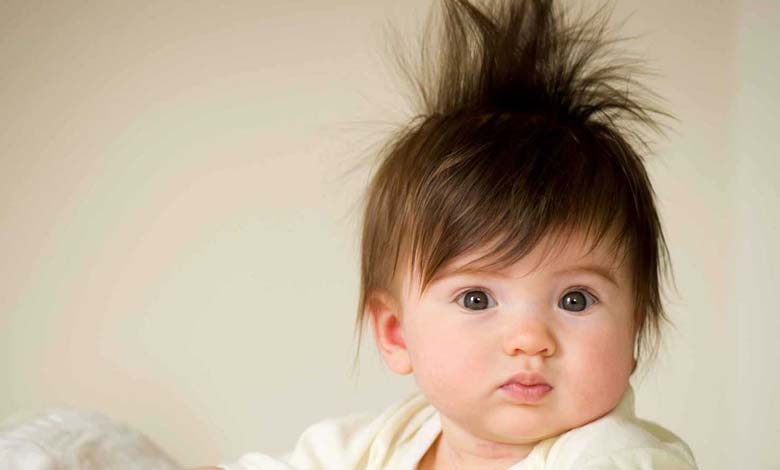Elevated Cortisol in Children’s Hair: A Biological Marker of Chronic Stress Linked to Mental Health Issues

Children are particularly vulnerable to the effects of chronic stress due to their ongoing developmental processes. Recent advances in neuroscience and developmental psychology have identified reliable biological markers for assessing stress exposure, among which cortisol, the so-called stress hormone, is gaining attention. Cortisol is secreted by the adrenal glands in response to activation of the hypothalamic-pituitary-adrenal (HPA) axis, a key system regulating the body’s response to perceived threats.
-
How vitamin deficiencies affect the formation of dark circles under the eyes
-
Climate change worsens allergies and extends their seasons
Cortisol and neurological development
Cortisol plays a crucial role in helping the body adapt to stress. It influences energy metabolism, immune function, and mood regulation. However, prolonged excessive production can negatively affect neurological development. Recent studies indicate that chronic high cortisol levels can impair neuronal plasticity, particularly in the hippocampus — a region central to memory and emotional regulation — and the amygdala, which is essential for processing fear and anxiety. These changes can lead to heightened stress reactivity and increased vulnerability to anxiety and depressive disorders.
Hair cortisol as a marker of chronic stress
Measuring cortisol in hair represents a significant methodological advancement. Unlike blood or saliva samples that reflect acute stress, hair cortisol analysis provides a long-term record of stress exposure over several months. This method is particularly valuable for detecting chronic stress, often associated with persistent environmental factors such as family conflict, poverty, exposure to violence, or early traumatic experiences.
-
Protein-Enriched Foods: Are They Safe for Children?
-
Screens and the Increased Risk of Cardiovascular Diseases in Children: A Growing Concern
Correlations with psychological disorders
Studies have shown a significant correlation between elevated hair cortisol levels and the presence of psychological symptoms in children, including generalized anxiety, irritability, sleep disturbances, attention difficulties, aggressive behaviors, social withdrawal, and early signs of depression. While correlation does not imply direct causation, it highlights the biological impact of chronic stress on psychological and emotional development.
Environmental and social factors
Several factors may contribute to chronically elevated cortisol in children:
- Family conflict and domestic violence: continuous tension or aggression in the home can repeatedly activate the HPA axis.
- Socioeconomic hardship: poverty, food insecurity, and lack of access to quality education are significant stressors.
- Early traumatic experiences: accidents, hospitalizations, or significant losses can trigger sustained cortisol overproduction.
Persistent exposure to these factors alters hormonal and neurological regulation, increasing the risk of long-term psychological disorders.
-
Virtual Autism in Children: Worrying Behaviors Caused by Excessive Screen Time
-
The dangers of overuse of antibiotics in children
Physical health consequences
Chronic high cortisol levels can also compromise children’s physical health. Documented effects include:
- Growth retardation and pubertal delays
- Immune system deficiencies and increased susceptibility to infections
- Metabolic disturbances, including abdominal obesity and insulin resistance
Thus, chronic stress is a multifactorial problem affecting both physical and mental well-being.
-
What Causes Ear Infections in Children?
-
Recurrent Ear Infections in Children: Causes and Treatment Options
Prevention and intervention strategies
Hair cortisol analysis opens innovative possibilities for early detection and prevention. Potential strategies include:
- Early biomedical monitoring: identifying children at risk through hair cortisol tests and providing targeted psychological support.
- Psychotherapeutic approaches: cognitive-behavioral therapy, resilience programs, relaxation techniques, and age-appropriate mindfulness interventions.
- Social and educational interventions: family support programs, assistance for disadvantaged households, and safe, nurturing school environments.
- Physical activity and creative outlets: regular exercise and artistic activities can reduce cortisol levels and enhance emotional well-being.
-
How Does “Gentle Parenting” Affect Children’s Development and Family Well-Being?
-
Why Are More and More Children Being Diagnosed with Autism?
A public health priority
Addressing chronic stress in children represents a major public health challenge. Integrating biological monitoring of cortisol with psychological and social interventions can help prevent mental disorders and promote resilience among younger generations.
In conclusion, elevated cortisol levels in children’s hair are not merely a biological indicator; they signal potential mental and physical health risks, reflecting the lasting impact of chronic stress on development. Understanding and addressing these factors is crucial to ensuring a healthy and balanced future for children exposed to environmental pressures and life challenges.












